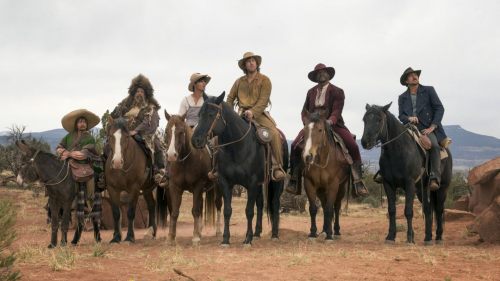Sunday Reads: Summer 2018 – The Dawn Of A New Era For Documentaries
Summer 2018 was an incredible season for docs. Documentaries are typically made for a niche audience, and yet remain one of the most-produced types of film as they are largely cheap to make. Traditionally, they appeal to a very specific type of demographic: heavily Caucasian, 55-years-old and over, educated, affluent and slightly female. It’s not dissimilar from what is thought of as the traditional “arthouse” demographic.
Because their usual audience is so specific, docs don’t generate a ton of revenue, either theatrically or on home video. However, they have always been a staple with broadcasters from government-funded platforms like PBS to prestige Pay TV cable channels like HBO. They offer high quality programming to a dedicated audience that isn’t expensive to produce.
It’s uncommon for docs to break $1 mil box office. The $5 mil threshold is exceptionally rare and only twenty-eight docs have eclipsed $10 mil domestic box. Those include fifteen titles that play differently than traditional docs such as “nature docs” (Winged Migration, March of the Penguins, Earth) and “music concert docs” (Justin Bieber: Never Say Never, Michael Jackson’s This is It, Katy Perry: Part of Me). Three traditional docs breaking $10 mil this summer (Won’t You Be My Neighbor? - $22.4m, RBG - $13.9m, and Three Identical Strangers - $11.3m and counting), is something to both celebrate and analyze.
What’s so special about this summer and these three docs? Let’s start by stating the obvious: these are films that are loved by both audiences and critics. That is certainly a significant factor, but there are always docs that are embraced by critics and audiences, and 99% of those docs don’t break $10 million. It’s also worth noting that all three films received outstanding support and marketing from their distribution companies: Magnolia, NEON and Focus Features. That’s also an important factor. What happened this summer? What if the audience for documentaries has changed? Fortunately, we can look at some exit polling for Won’t You Be My Neighbor? as it crossed the theater threshold needed for comScore’s PostTrack to gather data on its audience.
comScore has allowed me to share some of the exit polling data here, specifically how it played by age. As I observed earlier, the typical doc audience skews older (55+) but Won’t You Be My Neighbor? spread its audience out as 78% was under 55, and the film’s audience was the same percentage (43%) in the 25-44 group as the 45+ group.
We don’t have any exit polling data on other docs to compare, but for some frame of reference, comScore allowed me to share numbers on films that play very similar to docs: prestige awards dramas. Just looking at the +55 audience, Phantom Thread was 25%, The Post was 28%, Manchester By the Sea was 29%, Room was 26%, Spotlight was 31%, and even something as genre bending as Gravity had 23% of its audience older than 55. All were bigger in the 55+ category than Focus Features' Won’t You Be My Neighbor?
I am guilty of cherry picking some of the data to reinforce a theory I have about why these docs have taken off this summer. Its not good social science, but I don’t have the data to truly look at all three of the docs and compare their audience to the usual documentary audience over time. I’m trying to get to the “why” because the doc business has been thought to be completely cornered by Netflix of late. Netflix has always followed in the footsteps of HBO and even co-produced and co-financed the doc that won the Oscar for Best Documentary in 2004, Born into Brothels. But in the last five years, Netflix has tried to both produce and distribute a ton of docs and focus on winning Oscars for them, which they have done twice now (The White Helmets, 2017 Best Documentary Short and Icarus, 2018 Best Documentary Feature). This focus coincided with Netflix executive Lisa Nishimura’s move from their content acquisition team to their original doc team. Netflix has thrown a ton of their $8 billion-dollar original budget at doc features and series. As a result, distribution of docs became so difficult that several excellent festival docs couldn’t get theatrical distribution anymore because the revenue generated by docs became so focused on whatever their broadcast license fee was. In fact, the only reason I was able to give the film The Act of Killing any type of meaningful theatrical release in 2013 was because Lisa agreed to cover Drafthouse Film’s P&A costs with a Netflix broadcast deal in March, four months before the film was even released in theaters (and honestly, expected to do very little theatrical revenue).
If Netflix has effectively cornered the market on docs, then what happened this summer? What does the fact that Won’t You Be My Neighbor? skewed young mean? What if these two things are related? I’ve spent a lot of time at Birth.Movies.Death. describing Netflix as a disruptor, and I have observed numerous times that they moved customers away from theatrical and home video spending to an all-you-can-eat broadcast model. But what if they have built a new, younger doc audience? What if that new audience has watched docs on Netflix and is willing to get up off the couch to watch high-quality, well-marketed docs in the theater? I can’t prove this, but it’s my working theory and it fits all the available facts. While the three docs that have broken $10 mil at the box office are the focus of this article, there are a number of other docs this summer that have also opened well: Scotty and the Secret History of Hollywood, McQueen, Generation Wealth, Far from the Tree, The King, Eating Animals, The Gospel According to Andre, and Boom For Real. It’s hard to ignore this impact at the box office along with the growth of the category at Netflix. Are these things connected? I think so and its something to keep watching.



